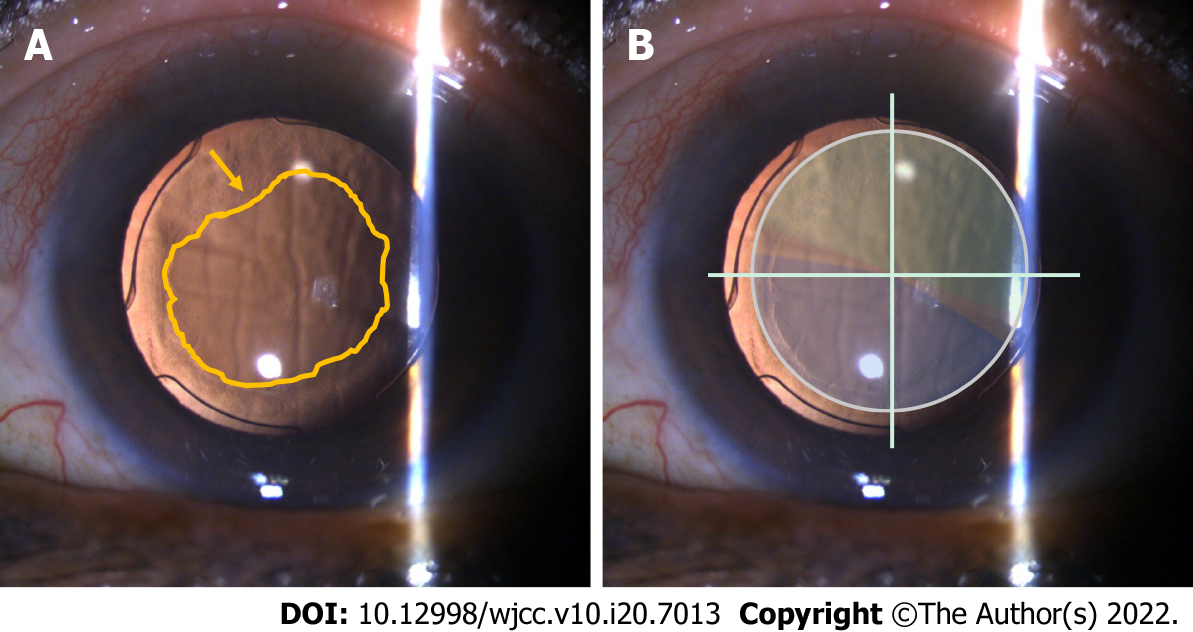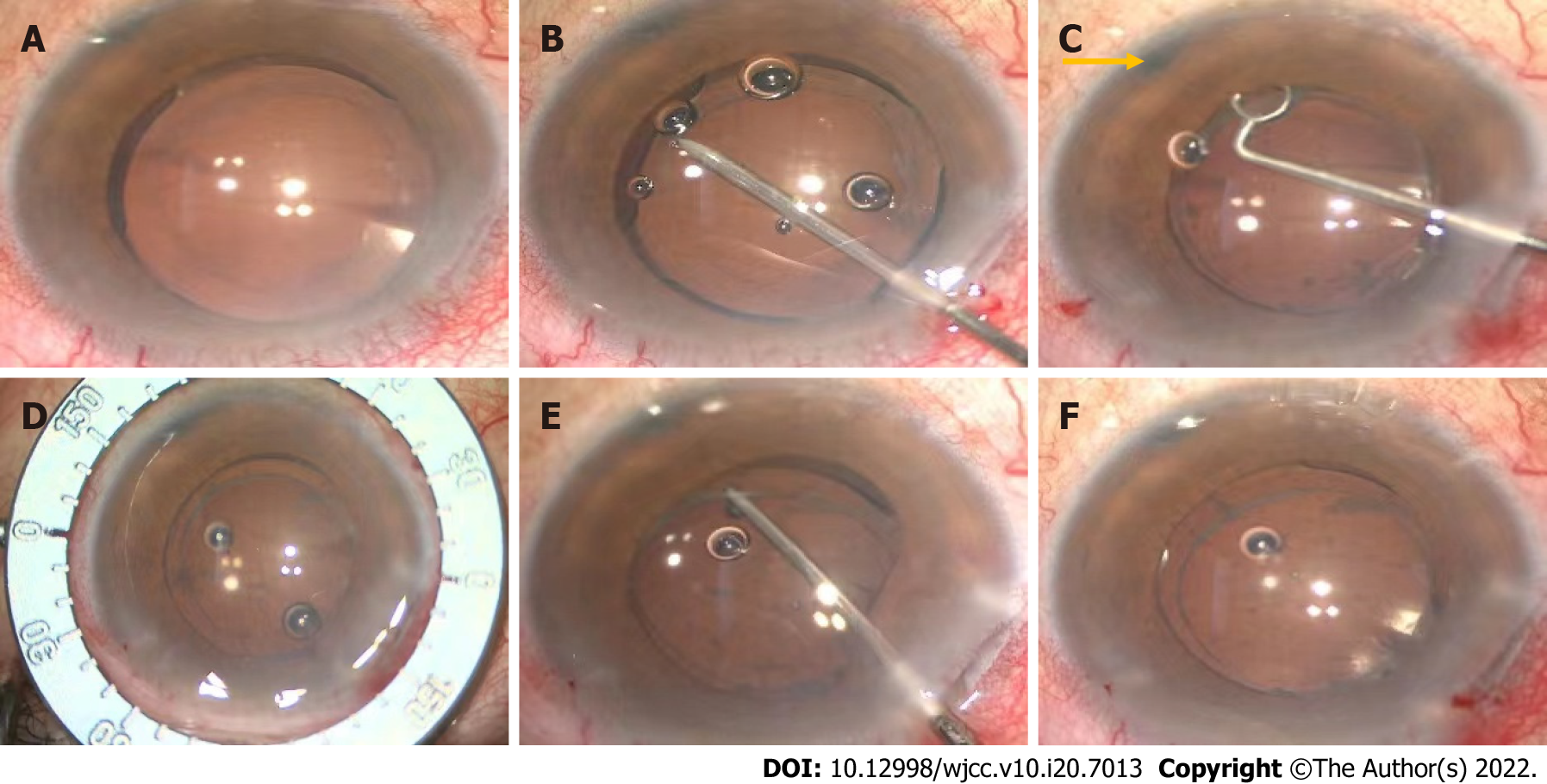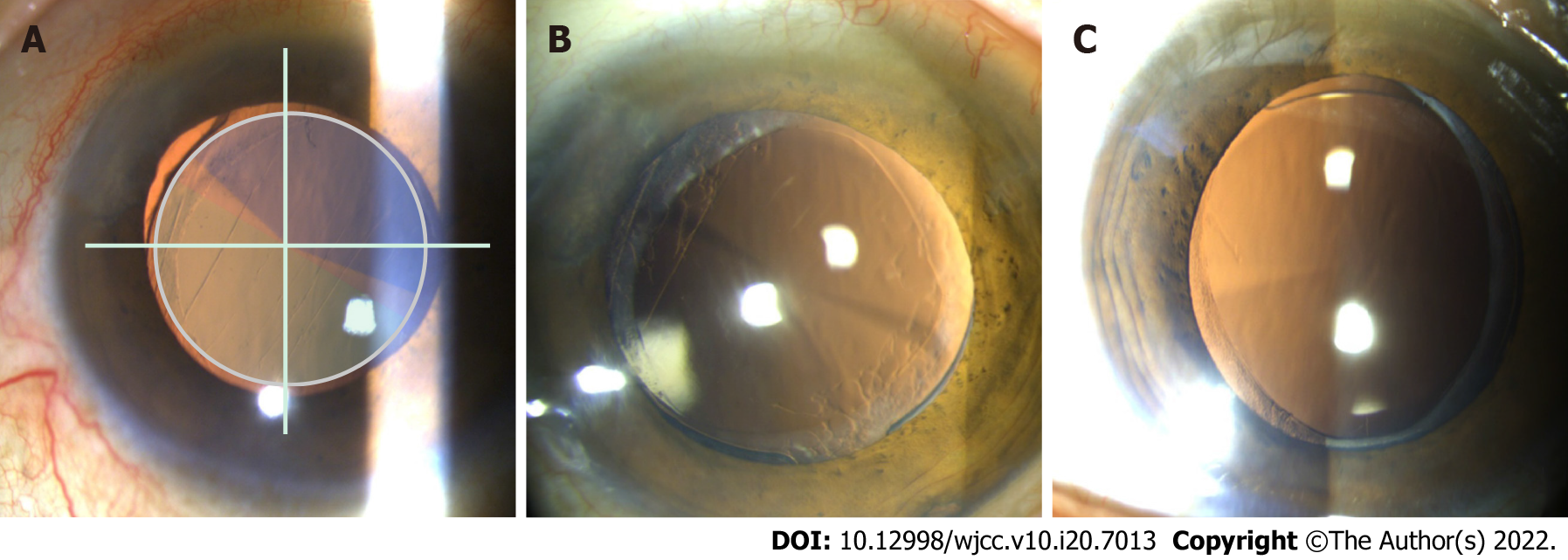Copyright
©The Author(s) 2022.
World J Clin Cases. Jul 16, 2022; 10(20): 7013-7019
Published online Jul 16, 2022. doi: 10.12998/wjcc.v10.i20.7013
Published online Jul 16, 2022. doi: 10.12998/wjcc.v10.i20.7013
Figure 1 Slit lamp examinations 2 wk after phacoemulsification in the left eye.
A: The swelling of the corneal endothelium and the proliferation of lens epithelial cells are most pronounced (yellow arrow) over the surface of the intraocular lens; B: The intraocular lens is centered with the near segment placed inferonasally (blue: near segment; green: distant segment).
Figure 2 Intraoperative images of the rotating lens.
A: Preoperatively, the light projection of the microscope coincides with the center of the intraocular lens (IOL); B: Separating capsulorhexis opening with a needle; C: Polishing anterior capsule. The laser hole (yellow arrow) after peripheral iridectomy is clearly visible; D: Locating the position of the IOL after rotation with a ring manually; E: Adjusting the position of the IOL with an IOL hook; F: The light projection of the microscope is on the central point of the IOL after rotation.
Figure 3 Slit lamp examinations 1 yr after phacoemulsification in the left eye.
A: The intraocular lens (IOL) with the near segment placed superotemporally the first day after rotation in the left eye (blue: near segment; green: distant segment); B: The IOL with the near segment placed superotemporally one year after rotation in the left eye; C: The IOL with the near segment placed inferiorly with slight nasal deviation half a year after phacomulsification in the right eye.
- Citation: Fan C, Zhou Y, Jiang J. Secondary positioning of rotationally asymmetric refractive multifocal intraocular lens in a patient with glaucoma: A case report. World J Clin Cases 2022; 10(20): 7013-7019
- URL: https://www.wjgnet.com/2307-8960/full/v10/i20/7013.htm
- DOI: https://dx.doi.org/10.12998/wjcc.v10.i20.7013











